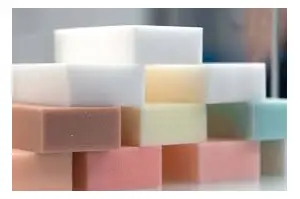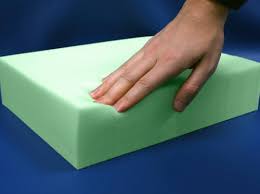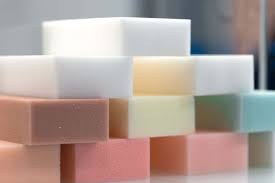The Fascinating World of Foam
Foam is a lightweight material characterized by a network of gas-filled bubbles or pores within a solid or liquid matrix. It is used in various industries for its cushioning, insulating, and buoyant properties. Common types include polyurethane foam (used in mattresses and upholstery), polystyrene foam (used in packaging and insulation), and polyethylene foam (used in life jackets and protective packaging). Foam plays a vital role in providing comfort, safety, and insulation in everyday products and applications.
Types of Foam

Foam, a versatile and ubiquitous material, is all around us, yet its complex nature and wide range of applications often go unnoticed. From the cushioning in our mattresses to the insulation in our homes, foam plays a crucial role in our daily lives.
Understanding Foam: What is it?
Foam, in its essence, is a material characterized by a network of gas-filled bubbles or pores within a solid or liquid matrix. These bubbles, or voids, are dispersed throughout the substance, giving it a porous and lightweight structure. This distinctive composition grants foam a range of unique properties that make it invaluable in numerous applications.
The formation of foam can occur through various methods, each resulting in specific types of foam with tailored characteristics. These methods include mechanical agitation, chemical reactions, or the introduction of gas into a liquid. The choice of method depends on the desired properties and applications of the foam.

Types of Foam
Foam comes in a diverse array of types, each engineered to serve specific purposes and industries. These various types of foam offer a wide range of properties and applications.
1. Polyurethane Foam
Description: Polyurethane foam is one of the most widely used and versatile types of foam. It is known for its exceptional cushioning properties, making it a popular choice for comfort applications.
Properties:
- Cushioning: Provides excellent support and comfort.
- Durability: Resistant to wear and tear, ensuring longevity.
- Compression Resistance: Maintains its shape and support even under repeated pressure.
Applications:
- Mattresses and pillows.
- Upholstery and furniture padding.
- Automotive seat cushions.
- Insulation in buildings and appliances.
2. Polystyrene Foam (EPS and XPS)
Description: Polystyrene foam, often recognized by its trade name Styrofoam, is a lightweight, rigid material extensively used for insulation and packaging.
Properties:
- Thermal Insulation: Offers excellent heat retention and insulation.
- Low Moisture Absorption: Resistant to water, making it an effective insulator.
- Low Density: Lightweight and easy to handle.
Applications:
- Insulation panels for buildings.
- Packaging materials for fragile items.
- Disposable food containers and cups.
3. Polyethylene Foam
Description: Polyethylene foam is a closed-cell foam known for its buoyancy and water-resistant properties. It finds extensive use in applications where flotation is crucial.
Properties:
- Buoyancy: Floats on water, making it ideal for marine applications.
- Lightweight: Easy to transport and handle.
- Shock Absorption: Provides excellent protection against impacts.
Applications:
- Life jackets and buoyancy aids.
- Marine buoys and fenders.
- Protective packaging for fragile items.
4. Polyvinyl Chloride (PVC) Foam
Description: PVC foam is a lightweight and versatile material known for its weather resistance, making it suitable for outdoor applications.
Properties:
- Weather Resistance: Withstands exposure to the elements.
- Insulation: Offers good thermal and electrical insulation properties.
- Low Water Absorption: Resistant to moisture.
Applications:
- Outdoor signage and displays.
- Marine applications, such as boat components.
- Insulation in electrical and electronic devices.
Production Processes
The production of foam involves intricate processes tailored to the specific type of foam being manufactured. These methods ensure that the resulting material possesses the desired properties and characteristics.
1. Extrusion
Description: Extrusion is a widely used method for producing foam, particularly for materials like polyethylene and PVC.
Process:
- Raw materials, often in the form of pellets or granules, are fed into an extruder.
- The materials are melted and mixed to form a viscous liquid.
- The liquid is then forced through a shaping die, which determines the final shape and structure of the foam.
- As the material exits the die, it expands and solidifies into a continuous profile of foam.
Applications:
- Polyethylene foam used in packaging and insulation.
- PVC foam for outdoor applications and signage.
2. Injection Molding
Description: Injection molding is a versatile process used for producing various types of foam, including polystyrene and polyurethane.
Process:
- Granular foam materials are heated until they become molten.
- The molten material is then injected into a mold cavity.
- The material cools and solidifies within the mold, taking on the desired shape.
- Once solidified, the foam product is ejected from the mold.
Applications:
- Polystyrene foam for packaging and insulation.
- Polyurethane foam for furniture and automotive components.
3. Chemical Reaction
Description: Chemical reaction processes are used for producing foams like polyurethane and polyisocyanurate.
Process:
- Two or more chemical components, typically a polyol and an isocyanate, are mixed together.
- This mixture undergoes a chemical reaction that generates gas.
- The gas becomes trapped within the liquid or molten material, creating bubbles and forming the foam structure.
- The foam then sets and solidifies.
Applications:
- Polyurethane foam used in mattresses, upholstery, and insulation.
- Polyisocyanurate foam for high-performance insulation.
4. Expansion
Description: Expansion is a method used for producing foams like polyethylene, polystyrene, and polyurethane.
Process:
- A blowing agent is introduced into the material, often in the form of a gas or a chemical compound.
- When heated, the blowing agent releases gas, causing the material to expand and form bubbles.
- The expanded material then cools and solidifies into the final foam structure.
Applications:
- Polyethylene foam for packaging and flotation devices.
- Polystyrene foam for insulation and packaging.
- Polyurethane foam for cushioning and insulation.
Applications Across Industries
Foam, with its diverse range of types and properties, finds applications across a multitude of industries. Its lightweight and versatile nature make it an indispensable material for a wide array of purposes.
1. Comfort and Furniture
- Mattresses and Pillows: Polyurethane foam is a common material used in mattresses and pillows due to its excellent cushioning properties, providing comfort and support for sleep.
- Cushions and Upholstery: Foam is used to pad seats, sofas, and other furniture pieces, enhancing comfort and durability.
2. Insulation
- Building Insulation: Foam, such as polystyrene and polyurethane, is widely used in construction for thermal and sound insulation, improving energy efficiency and comfort in buildings.
- Refrigeration and HVAC Systems: Foam insulation is employed in refrigerators, freezers, and air conditioning systems to maintain temperature control.
3. Packaging
- Protective Packaging: Foam is used to create cushioning and protective layers around fragile items during transportation and storage, preventing damage from shocks and vibrations.
- Custom Inserts: Foam can be custom-cut to fit specific products, ensuring a secure and snug fit within packaging containers.
4. Automotive
- Seating and Interior Components: Foam is extensively used in automotive seats, headrests, armrests, and interior trims to provide comfort and support for passengers.
- Sound Insulation: Acoustic foam is utilized to reduce noise levels within vehicles, enhancing the comfort of the driving experience.
5. Medical and Healthcare
- Wound Dressings: Foam dressings are used in wound care to provide a cushioned and absorbent surface for wounds to heal.
- Orthopedic Supports and Prosthetics: Medical-grade foam is used in orthopedic supports, braces, and prosthetic devices to provide comfort and support for patients.
6. Sports and Recreation
- Safety Gear: Foam is used in various types of safety equipment, such as helmets, knee pads, and body protectors, to absorb impacts and protect athletes during sports and recreational activities.
- Water Sports Equipment: Closed-cell foam is used in flotation devices like life jackets, ensuring buoyancy and safety on the water.
7. Marine and Aquatic Applications
- Marine Buoys and Fenders: Foam materials are used in the construction of marine buoys and fenders for navigation and docking purposes.
- Life Jackets and Buoyancy Aids: Closed-cell foam is crucial in the production of life jackets and other buoyancy aids for water safety.
8. Consumer Goods
- Toys and Games: Foam materials are used in toys, puzzles, and games, providing soft and safe surfaces for play.
- Crafts and Hobbies: Foam is a popular material for various crafts and hobbies, including model-making, DIY projects, and cosplay costumes.
Is foam good for body
Foam, particularly high-quality and appropriately designed foams, can be beneficial for the body in various ways:
- Support and Comfort: Foam, such as memory foam or latex foam, can provide excellent support for the body's natural contours. This can help alleviate pressure points, reducing discomfort and promoting better sleep.
- Alignment: Properly designed foam can help align the spine and distribute weight evenly, which can be particularly important for those with back or joint issues.
- Pressure Relief: Foam can help distribute body weight evenly, reducing the pressure on specific areas of the body. This is especially beneficial for individuals who spend long periods in bed or seated.
- Reduced Motion Transfer: Foam mattresses, particularly memory foam, can absorb and isolate motion, reducing disruptions caused by a partner moving during sleep.
- Improved Circulation: The even support provided by foam can help promote better blood circulation, reducing the risk of numbness and tingling in limbs.
- Allergen Resistance: Some types of foam, like latex foam, are naturally resistant to allergens like dust mites and mold, providing a healthier sleeping environment for those with allergies.
However, it's important to note that not all foam products are created equal. Quality, density, and construction play a significant role in determining how beneficial a specific foam product will be for the body.
Foam, with its diverse range of types, production methods, and applications, stands as a testament to the ingenuity of material science. Its lightweight, cushioning, and insulating properties make it indispensable in various industries, contributing to our daily comfort, safety, and well-being. As technology advances, we can expect even more innovative uses for this versatile material, further enhancing our quality of life.




